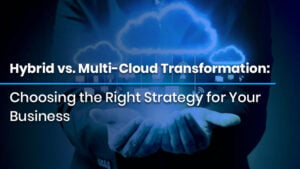
How to Strengthen Security Using CIS Controls and Posture Analysis
How to Strengthen Security Using CIS Controls and Posture Analysis Introduction In the fast-paced and ever-evolving world of cybersecurity, defending digital infrastructure goes far
🔥Premium Monthly Plan – Only $11.99!🔥Hurry! This exclusive deal won’t last long. 👉 Subscribe Now!

How to Strengthen Security Using CIS Controls and Posture Analysis Introduction In the fast-paced and ever-evolving world of cybersecurity, defending digital infrastructure goes far

How to Prepare for the AWS Data Engineer Exam Introduction With the world becoming increasingly data-driven, organizations are depending on cloud-based systems to store, process,

Hybrid vs. Multi-Cloud Transformation: Choosing the Right Strategy for Your Business Introduction In the digital-first economy of today, cloud transformation is no longer a
Table of Contents
Information Technology (IT) is an integral part of modern business operations and plays a crucial role in the success and efficiency of organizations. IT best practices are guidelines, standards, and methodologies developed and refined over time to help organizations effectively manage and utilize their IT resources. These practices are designed to optimize IT operations, enhance security, improve reliability, and support business objectives. This article covers detailed knowledge of IT Best Practices to Follow.
Check out our Courses Now if you are Considering Pursuing a Career in the IT Domain.
IT best practices encompass a wide range of areas within the IT domain, including:
Implementing IT best practices can lead to several benefits, including increased operational efficiency, reduced downtime, enhanced security, cost savings, and improved customer satisfaction. Organizations that adopt and adapt these best practices are better positioned to succeed in an increasingly technology-driven world.
Implementing IT best practices offers numerous benefits to organizations, regardless of size or industry. These practices are designed to enhance the management and utilization of information technology resources. Here are some of the key benefits of using IT best practices:
The future of IT best practices is continually evolving as technology advances and the business landscape changes. Here are some key trends and considerations that are shaping the future of IT best practices:
IT best practices are guidelines, standards, and methodologies organizations implement to manage their information technology resources effectively. These practices are crucial for optimizing IT operations, enhancing security, aligning IT strategies with business objectives, and realizing a wide range of benefits.
© 2025 All rights reserved | Privacy Policy | Terms and Conditions | Sitemap | Cookie Policy




